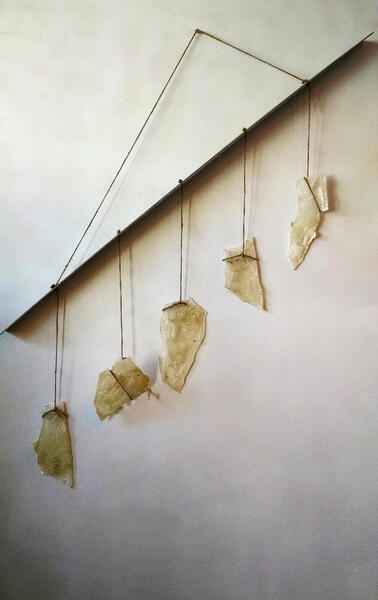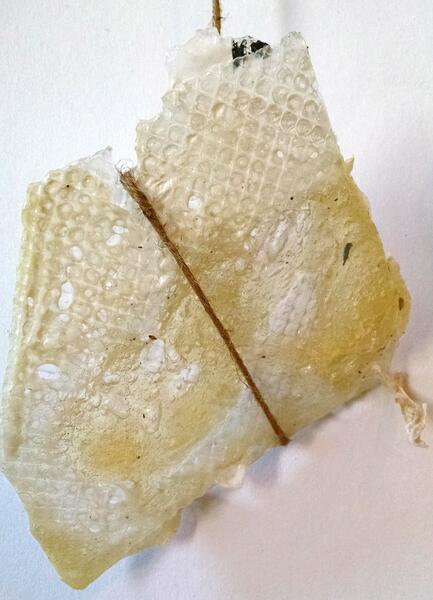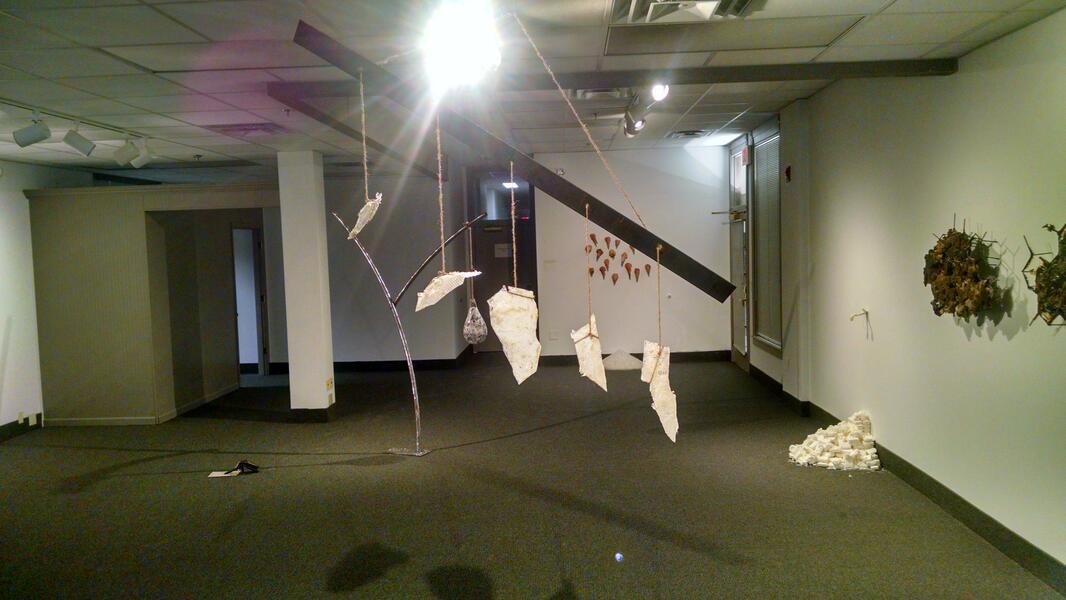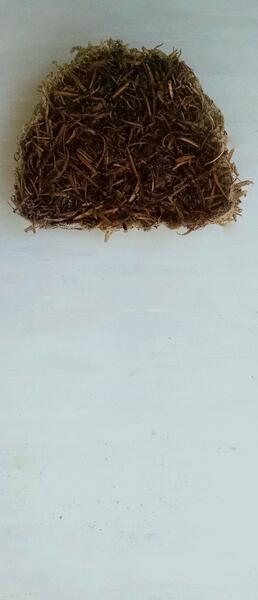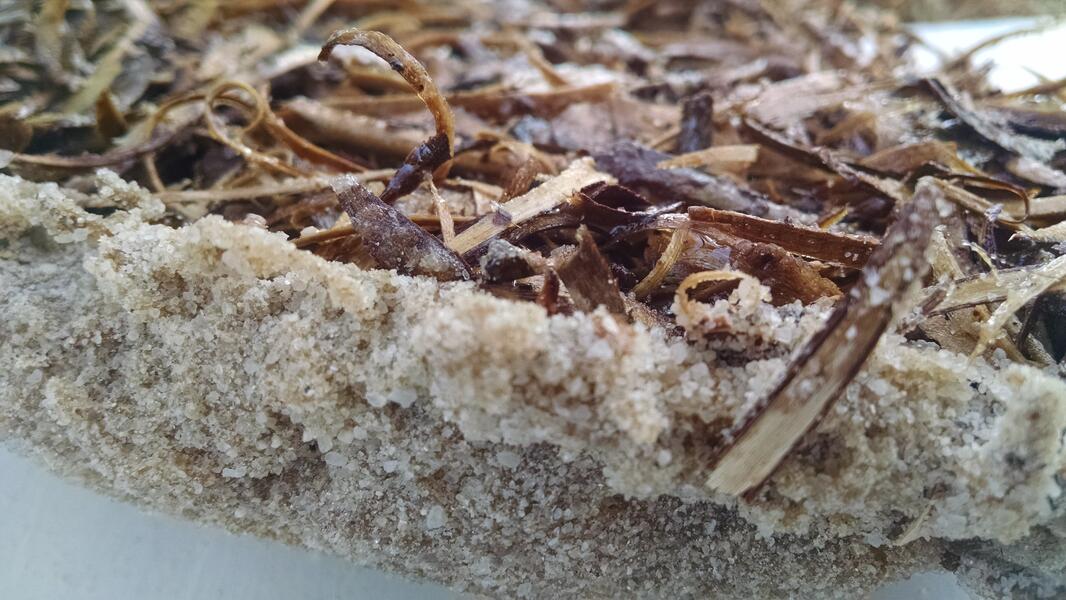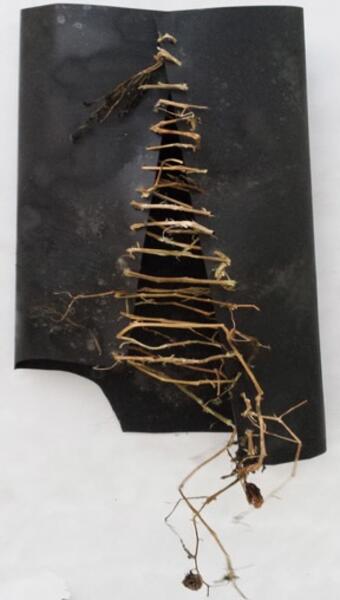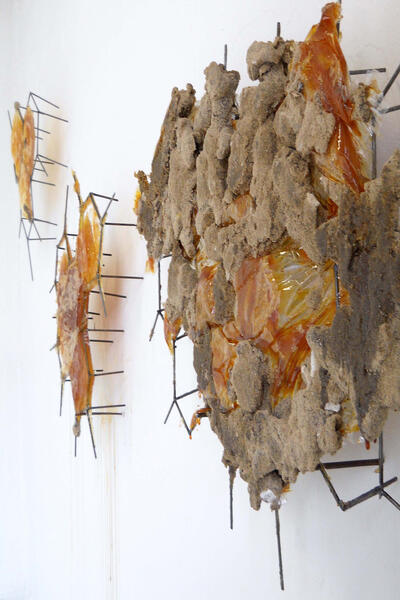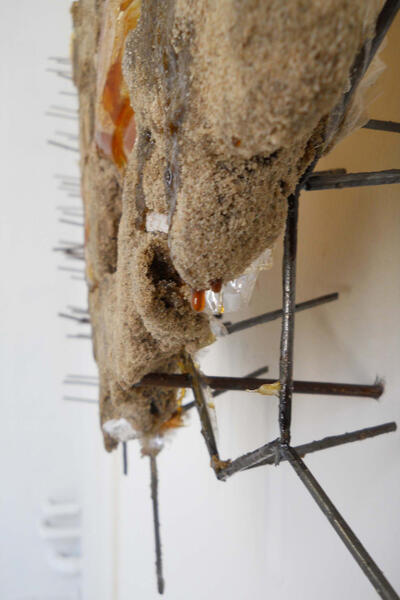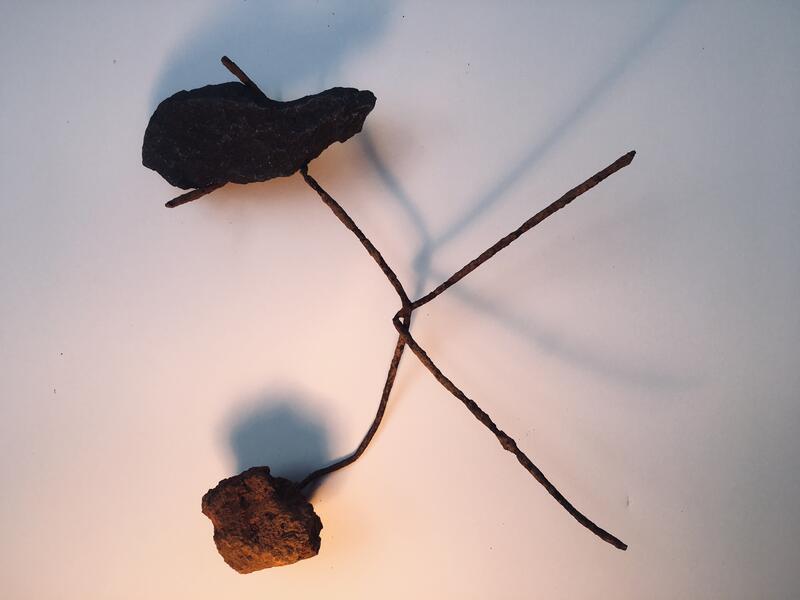About Stephanie
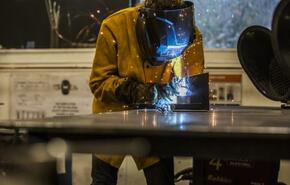
Stephanie Garon's environmental art investigates humanity's interruption of nature. Power. Natural objects juxtaposed against industrial materials reference history, science, and culture to convey themes of claim, labor, and time.
Stephanie is a Trawick Art Prize winner, Hamiltonian Fellow, a National Park Service AIR in the Everglades, and grant recipient from the Puffin Foundation Environmental Art, Foundation for Contemporary Arts, Lucid Art Foundation, Maryland State Arts… more
Sculpture
My sculpture brings natural materials into the gallery space to investigate humanity's interruption of the environment. Natural materials are hand sourced at each specific site and all steel sculpture is fabricated by me to address themes of claim, labor and permanence.
I've worked with teams of scientists, indigenous tribes, geologists, lawyers, activists, and community members on issues surrounding a mine in Maine/Passamaquoddy land. I was invited by Smithereen Farm in Pembroke, Maine to create large scale artworks using 20,000 rock core samples to support their Maine Clean Water campaign. Five surrounding towns and two reservations depend upon clean water for their economy, health, & environment. The body of artwork was exhibited at The Kreeger Museum, Hamiltonian Gallery, MICA, and Alchemy of Art Gallery and will travel for the next two years to sites including Stand4 Gallery (Brooklyn), The Parsonage Gallery (Maine) and University of Southern Maine in 2024.
-
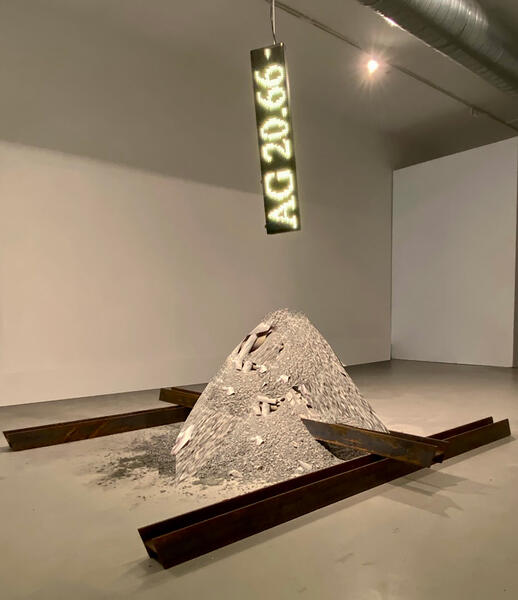 Gold RushGold Rush: Steel I-beams, mined rock cores, LED ticker Gold Rush uses rock cores previously extracted from a mine to examine the ecological, cultural, and social implications of mining Indigenous land. An LED ticker displays weekly stock prices for gold, silver and copper to emphasize the commodification of natural resources.
Gold RushGold Rush: Steel I-beams, mined rock cores, LED ticker Gold Rush uses rock cores previously extracted from a mine to examine the ecological, cultural, and social implications of mining Indigenous land. An LED ticker displays weekly stock prices for gold, silver and copper to emphasize the commodification of natural resources. -
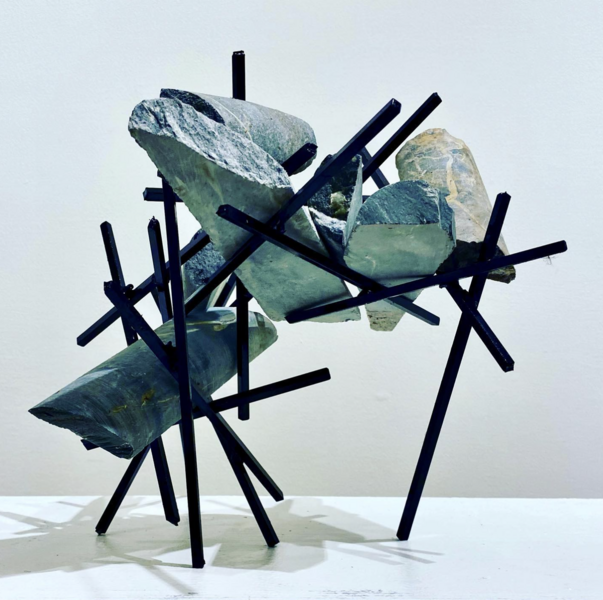 AssumptionAssumption: Steel, mined rock cores from Maine/Passamaquoddy land 1'x1'x1'
AssumptionAssumption: Steel, mined rock cores from Maine/Passamaquoddy land 1'x1'x1' -
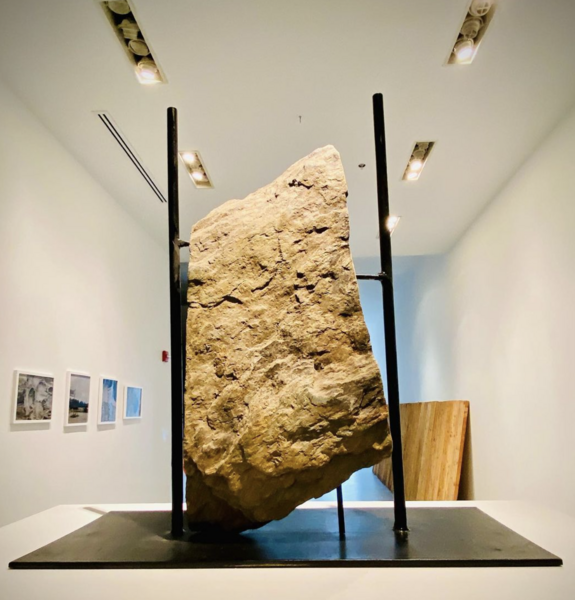 SaySteel, mica schist 24”x24”x12” Claim and permanence of natural resources are underlying themes of my works of art on mining. With more than 300 active mines in the Baltimore-DC region, on indigenous land, I wonder if we will Say mine Say yours Say stop Say time Say cheese Say anything
SaySteel, mica schist 24”x24”x12” Claim and permanence of natural resources are underlying themes of my works of art on mining. With more than 300 active mines in the Baltimore-DC region, on indigenous land, I wonder if we will Say mine Say yours Say stop Say time Say cheese Say anything -
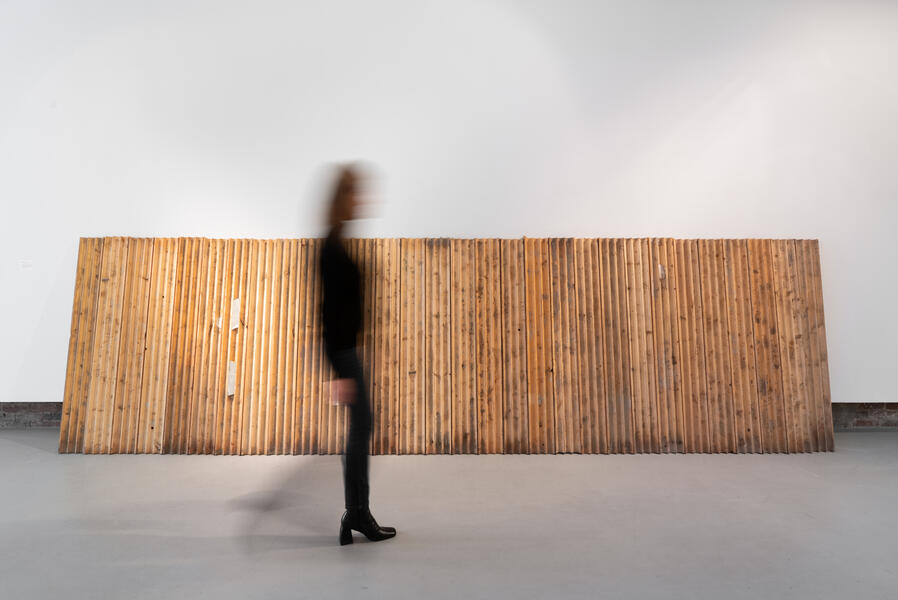 ShaftedShafted Hand carved wood 5'x16'x3' Trays that hold and store mined cores were historically hand carved from wood, an artistry unto itself. The Maine cores were stored in hundreds of these trays. In modern mining practice, the trays are made of plastic.
ShaftedShafted Hand carved wood 5'x16'x3' Trays that hold and store mined cores were historically hand carved from wood, an artistry unto itself. The Maine cores were stored in hundreds of these trays. In modern mining practice, the trays are made of plastic. -
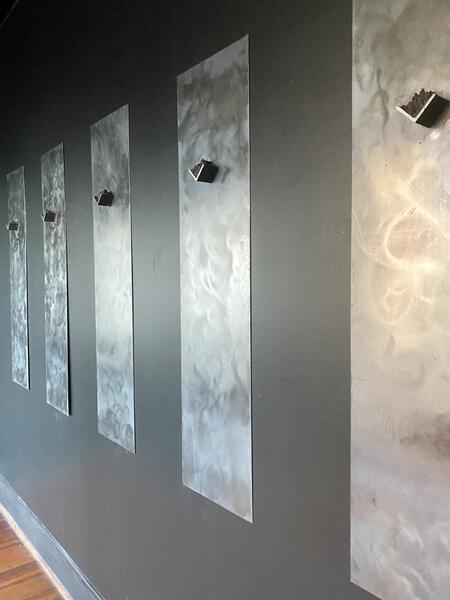 CatchCatch: Steel, ground mined rock cores from Maine/Passamaquoddy land 4'x9'x3"
CatchCatch: Steel, ground mined rock cores from Maine/Passamaquoddy land 4'x9'x3" -
BraeBrae: Steel, cypress tree. 10'x10'x8' (As shown at Brentwood Arts Exchange 2021)
-
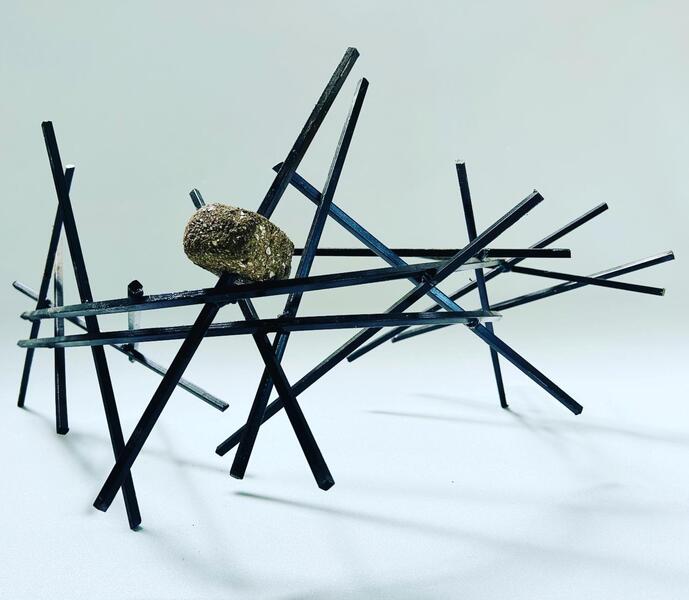 Queen
QueenSteel, wild clay sourced from reclaimed oyster shells in collaboration with The Billion Oyster Project NYC.
12"x20"x12"
-
ImpalpableImpalpable: steel, felled red oak, enamel 96"x72"x36" (As shown at Hemphill Gallery 2021)
-
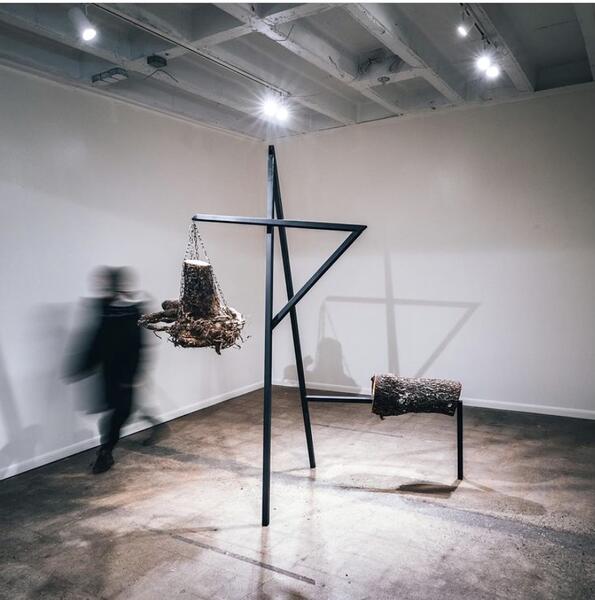 PreyPrey: Steel, oak 8'x6'x4' (As shown at Culture House 2021)
PreyPrey: Steel, oak 8'x6'x4' (As shown at Culture House 2021) -
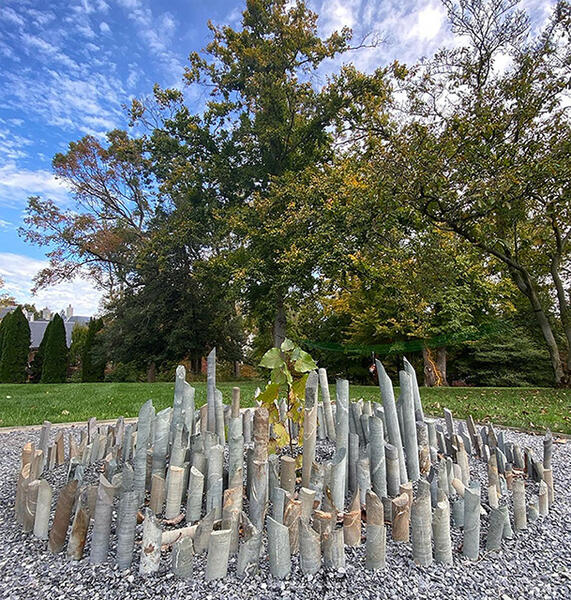 VoidVoid II: Extracted mine cores from Maine/Passamaquoddy land 10'x10'x3' (As shown at The Kreeger Museum)
VoidVoid II: Extracted mine cores from Maine/Passamaquoddy land 10'x10'x3' (As shown at The Kreeger Museum)
760 torr
14"x14"x3.87"
Installation
-
PryPry, a site specific installation at Washington College, investigates humanity's interruption of nature. Climate change ields more invasive species, like the acres of phragmites bordering the Chester River. Indoor installation: steel, phragmites sourced from Chester River, single channel video, sound (24'x24'x14') Outdoor installation: steel (14'x14'x7')
-
HoverHover: steel, prunus cerasus tree, cherries, projection 12'x13'x10' Sound by Clint Sleeper By presenting nontraditional materials, like a suspended cherry tree and its fallen cherries, within a gallery space, Hover captures the ideals of the Arte Povera movement. Surrounded by steel sculptures, the audience witnesses the decomposition of the natural elements juxtaposed against the industrial materials through the duration of the exhibit. Hover investigates themes of claim, women's labor, and permanence.
-
Breaking GroundWait Loblolly pine needles, video projection (4:53 loop) Site specific installation Sound by Clint Sleeper 2021 Breaking Ground, a site specific full room installation at Washington DC's Honfleur Gallery, explores humanity’s connection to nature in an urban setting and features 200 cubic feet of loblolly pine needles. An immersive, ecologically motivated intervention by humanity, Breaking Ground transplants locally sourced Loblolly pine needles into an interior gallery space. By following the Arte Povera movement, the installation questions the use of nontraditional materials as art and humanity's connection to them. Pine needles change placement, emphasizing the fragility of nature. Rich in associations, the work functions as abstracted expressions of a time, place, and way of life. The resulting artwork is a visualization of an uneasy truce: the fragile balance between nature and humanity.
-
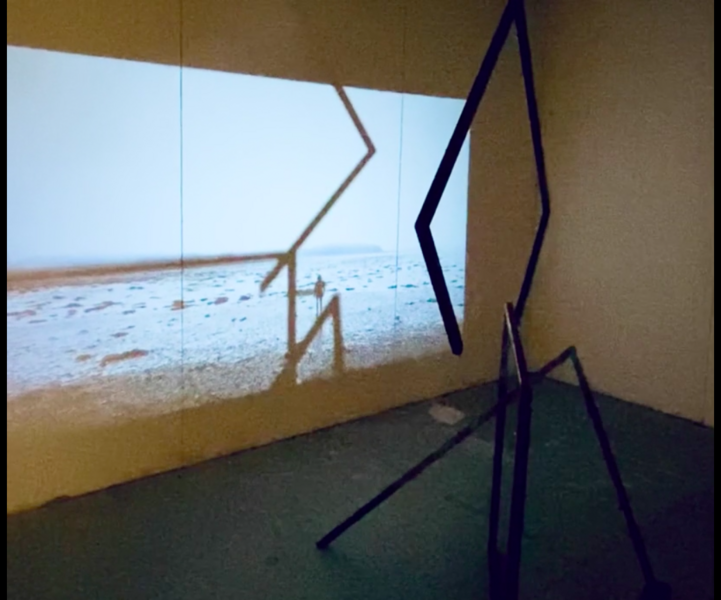 Bearing“Bearing”: steel, single channel video 7:45, sound (8’x9’x8’), steel 8'x4'x4' Filmed at low tide in Maine (Cobscook Bay near Pleasant Point Reservation). An area on Google Maps that’s colored grey since it marks indigenous land. Bearing investigates space & impermanence with undercurrents of land claim. Steel sculpture serves as a mapping of routes taken towards and away from a vanishing point.
Bearing“Bearing”: steel, single channel video 7:45, sound (8’x9’x8’), steel 8'x4'x4' Filmed at low tide in Maine (Cobscook Bay near Pleasant Point Reservation). An area on Google Maps that’s colored grey since it marks indigenous land. Bearing investigates space & impermanence with undercurrents of land claim. Steel sculpture serves as a mapping of routes taken towards and away from a vanishing point. -
Silent SpringSilent Spring, an immersive environmental installation at Motor House (12/1/20-2/1/21), explores humanity’s connection to the environment through a journey that is both an expedition and a contemplation. Rows of 1,000 prehistoric-sized Princess Tree leaves (Paulownia tomentosa) frame an ethereal leaf labyrinth. These leaves, classified as an invasive species of weeds, are typically found in soils hurt by construction or fire and frequently located in pavement cracks or by powerlines at the road’s edge. They grow 15 feet/year until smothering the canopy. All leaves were sourced from the Baltimore region over the course of one year. In Japan, it's customary to plant a Princess Tree when a girl is born. When she is eligible for marriage, the tree is cut down and carved for her dowry. Women and nature, around the world, intersect and are tied to issues of claim, commodity, and climate change. The labyrinth opens to two large I-beam steel armatures which hold two Princess Trees.
-
Lament IILament II: steel, pine/oak/maple tree branches 8'x23'x4' Women around the world, from Bangladesh to Benin, carry bundles of sticks to support their community. Confined by land and ritualistic roles, Lament references women's work. Lament II was curated for Washington DC's Foggy Bottom Biennial.
-
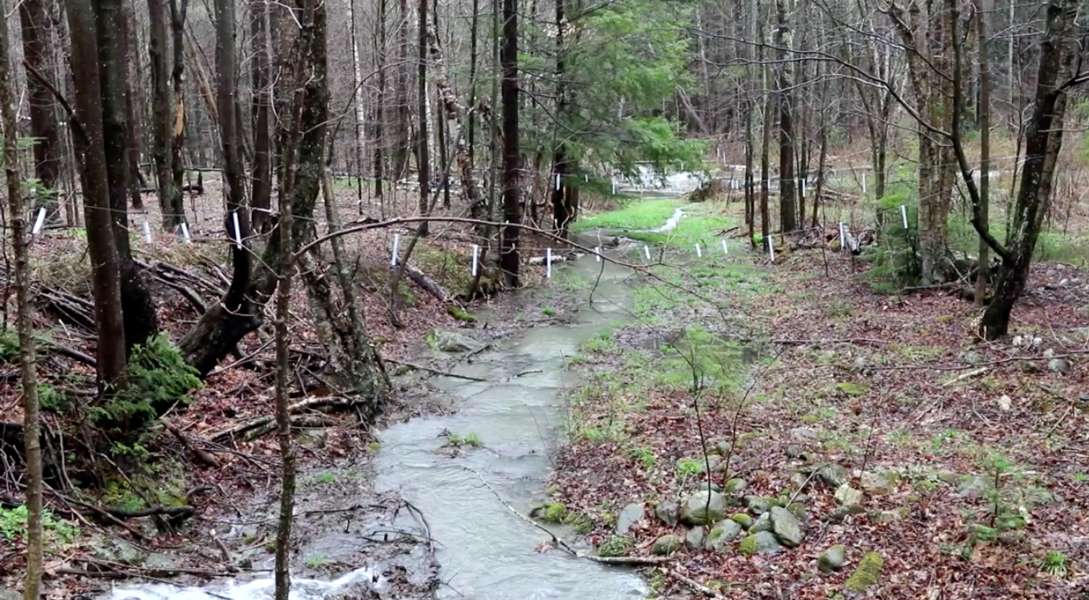 FathomFathom: sound art generated by Vermont's Mad River & Lincoln Brook’s force against 300 feet of steel & galvanized cable. Collaboration with Clint Sleeper. . Fathom, inspired by the unit of measurement of water depth, uses sound as the intersection of art & science. As we experience more storms from climate change, water agitates the steel to make sound.
FathomFathom: sound art generated by Vermont's Mad River & Lincoln Brook’s force against 300 feet of steel & galvanized cable. Collaboration with Clint Sleeper. . Fathom, inspired by the unit of measurement of water depth, uses sound as the intersection of art & science. As we experience more storms from climate change, water agitates the steel to make sound. -
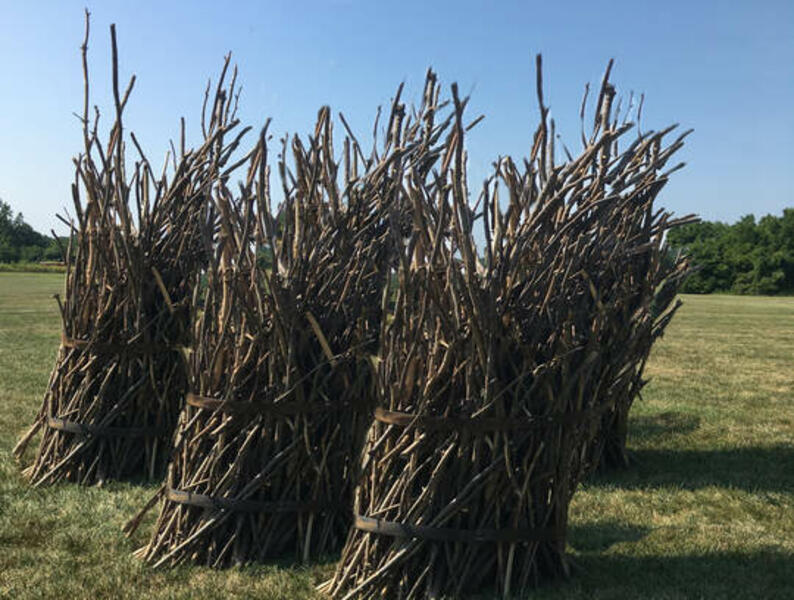 LamentLament: steel, oak/pine/maple sticks sourced from Maryland forests 14'x14'x8'. Women around the world, from Bangladesh to Benin, carry bundles of sticks to support their community. The sticks are used for shelter, cooking, and tool making. Confined by land and ritualistic roles, Lament references women's work and humanity's dependency on forests. With climate change and globally devastating wildfires, a single branch becomes sacred symbolism in a time of massive deforestation.
LamentLament: steel, oak/pine/maple sticks sourced from Maryland forests 14'x14'x8'. Women around the world, from Bangladesh to Benin, carry bundles of sticks to support their community. The sticks are used for shelter, cooking, and tool making. Confined by land and ritualistic roles, Lament references women's work and humanity's dependency on forests. With climate change and globally devastating wildfires, a single branch becomes sacred symbolism in a time of massive deforestation. -
FramedFramed: steel, white ash tree 4'x8'x4' (As shown at Studio 80 Sculpture Park)
-
TreadSteel, soil, glue 4'x6' Climate control, gravity, and time influence the artwork to decompose. Changes in the soil create a performance art as the movement of the soil puckers and landslides down the frame. As shown: day 4 at Creative Alliance's Organic Destruction exhibition.
North/South
-
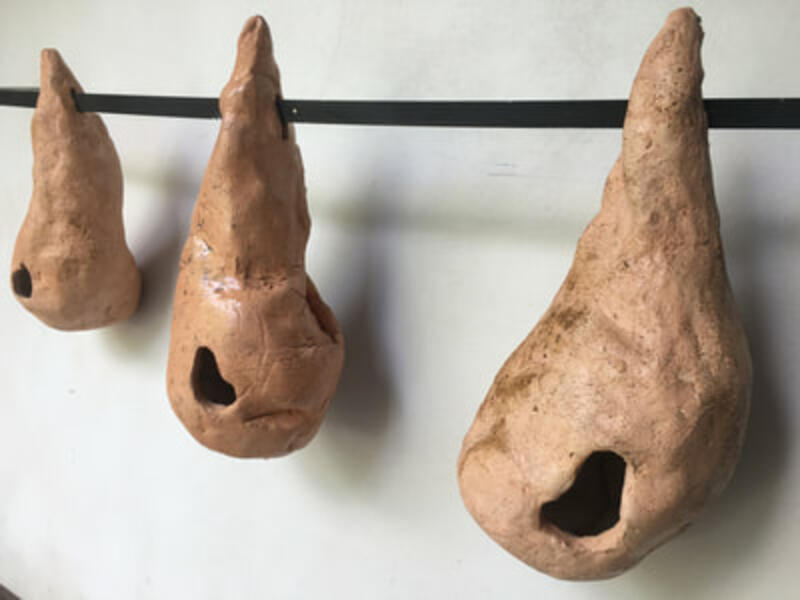 BeauregardBeauregard: steel, hand made clay from Alabama
BeauregardBeauregard: steel, hand made clay from Alabama -
 Beatedsteel, beets, cement made from beet juice 4"x24"x6"
Beatedsteel, beets, cement made from beet juice 4"x24"x6" -
KSteel, New York Bluestone, Alabama Hematite 14"X14"X6"
-
SnuffAluminum, clay, Malbec glaze 30"x18"x10"
-
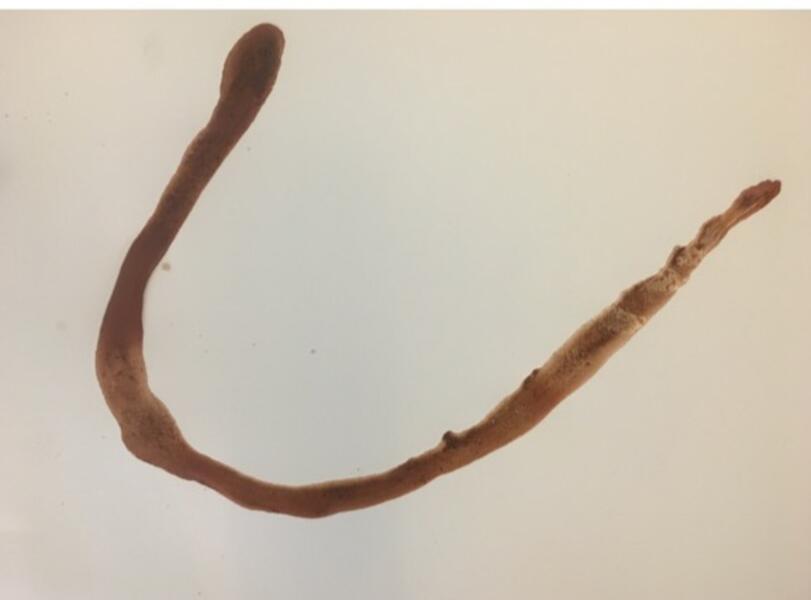 CuspAlabama iron ore pigment on paper 12"x18"
CuspAlabama iron ore pigment on paper 12"x18" -
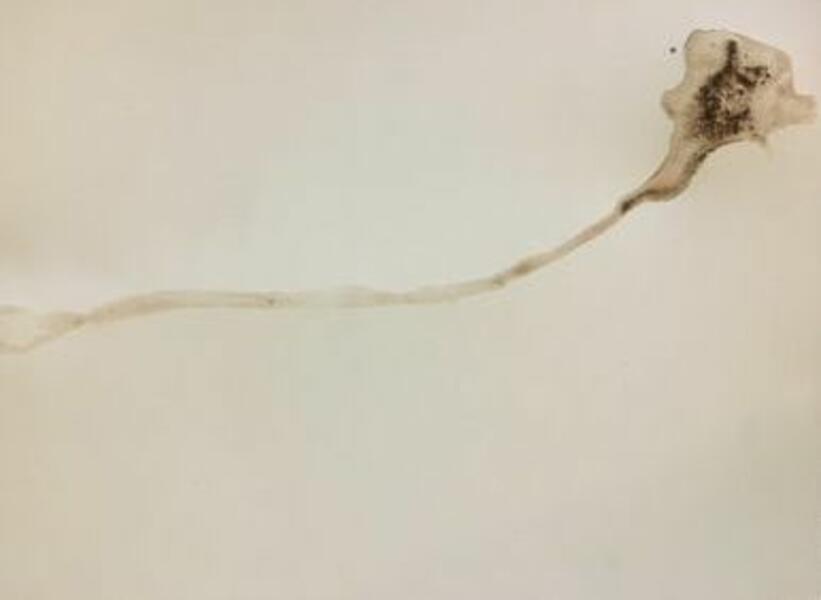 CareenAlabama iron ore pigment on paper 12"x18"
CareenAlabama iron ore pigment on paper 12"x18" -
Casksteel, whisky patina 36"x48"x8"
-
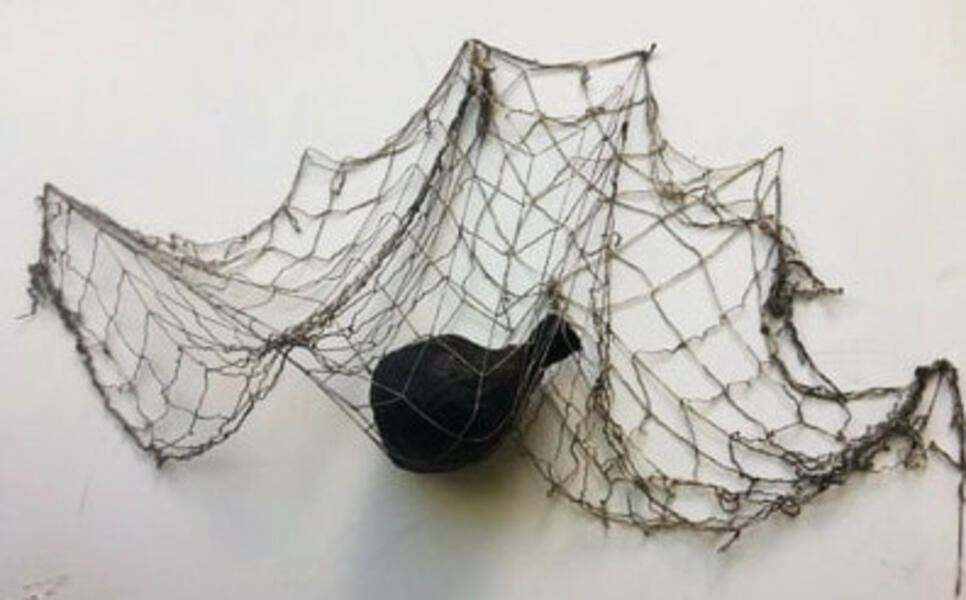 Scarbeeswax, net, charcoal 36"x36"x12"
Scarbeeswax, net, charcoal 36"x36"x12"
Works On Paper
-
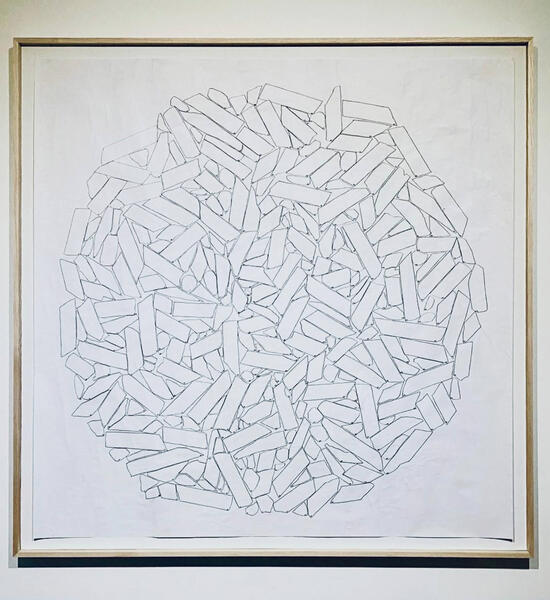 VoidVoid: Ink tracing of 324 mine cores from Maine/Passamaquoddy land removed 5'x5'
VoidVoid: Ink tracing of 324 mine cores from Maine/Passamaquoddy land removed 5'x5' -
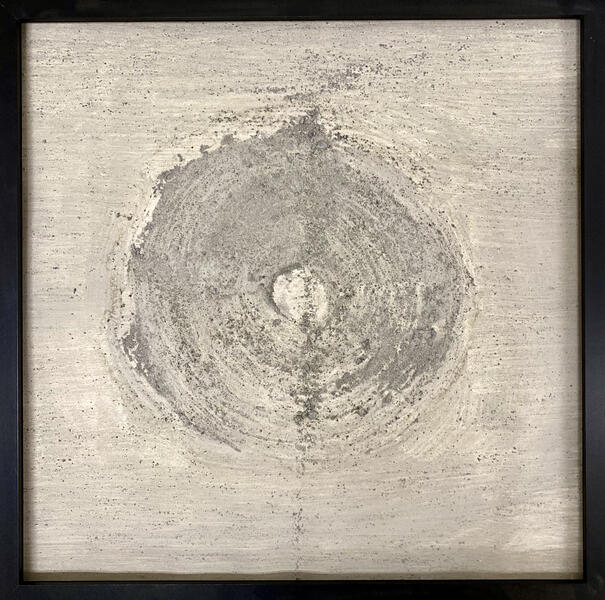 CoreCore Extracted mine core from Maine/Passamaquoddy land 36"x36"
CoreCore Extracted mine core from Maine/Passamaquoddy land 36"x36" -
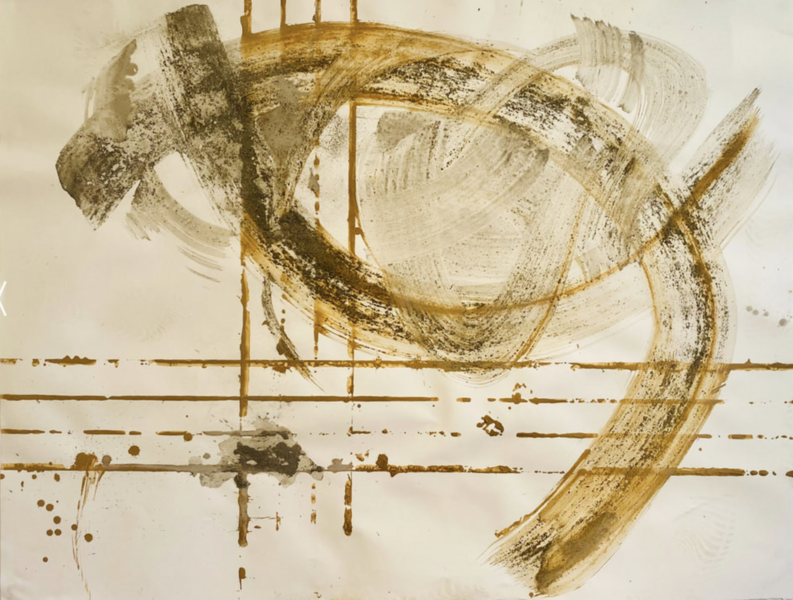 UntitledUntitled Extracted mine cores from Maine/Passamaquoddy land 48"x60' To extract rock cores, mines clear 30 feet of trees to insert a 5" wide steel pipe for mechanical operations. These works on paper conceptually tie rock to paper, two critical natural resources. Pigments were made using the cores and juxtaposing them with rocks mixed with calcium hydroxide (lime), the primary chemical mines use for extractions.
UntitledUntitled Extracted mine cores from Maine/Passamaquoddy land 48"x60' To extract rock cores, mines clear 30 feet of trees to insert a 5" wide steel pipe for mechanical operations. These works on paper conceptually tie rock to paper, two critical natural resources. Pigments were made using the cores and juxtaposing them with rocks mixed with calcium hydroxide (lime), the primary chemical mines use for extractions. -
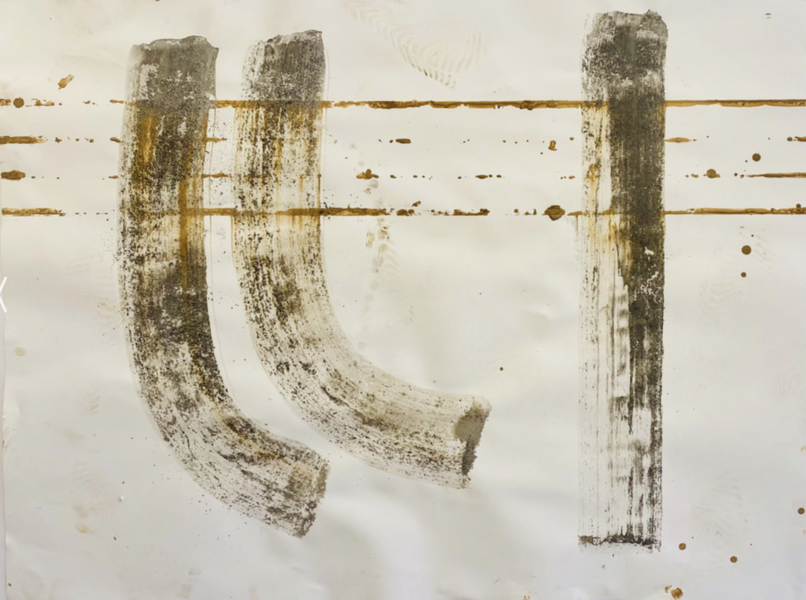 UntitledUntitled Extracted mine cores from Maine/Passamaquoddy land 48"x60"
UntitledUntitled Extracted mine cores from Maine/Passamaquoddy land 48"x60" -
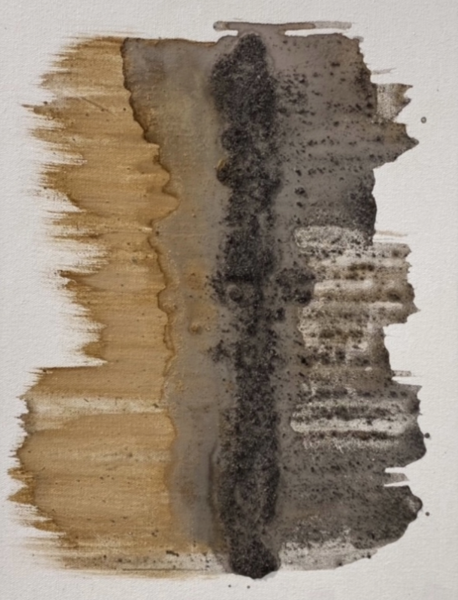 UntitledUntitled Extracted mine cores from Maine/Passamaquoddy land, Baltimore tap water, calcium hydroxide, soil 18"x24"
UntitledUntitled Extracted mine cores from Maine/Passamaquoddy land, Baltimore tap water, calcium hydroxide, soil 18"x24" -
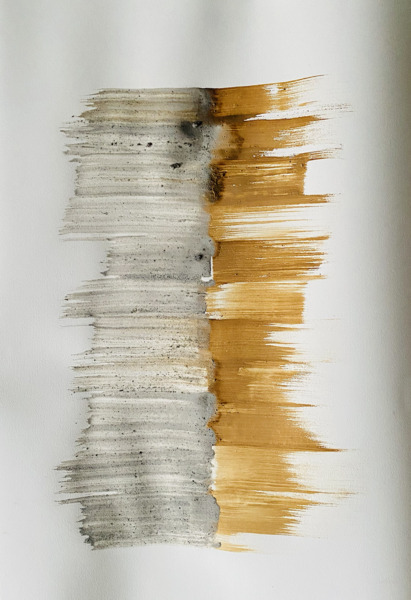 UntitledUntitled Extracted mine cores from Maine/Passamaquoddy land, Baltimore tap water, calcium hydroxide, soil 18"x24"
UntitledUntitled Extracted mine cores from Maine/Passamaquoddy land, Baltimore tap water, calcium hydroxide, soil 18"x24" -
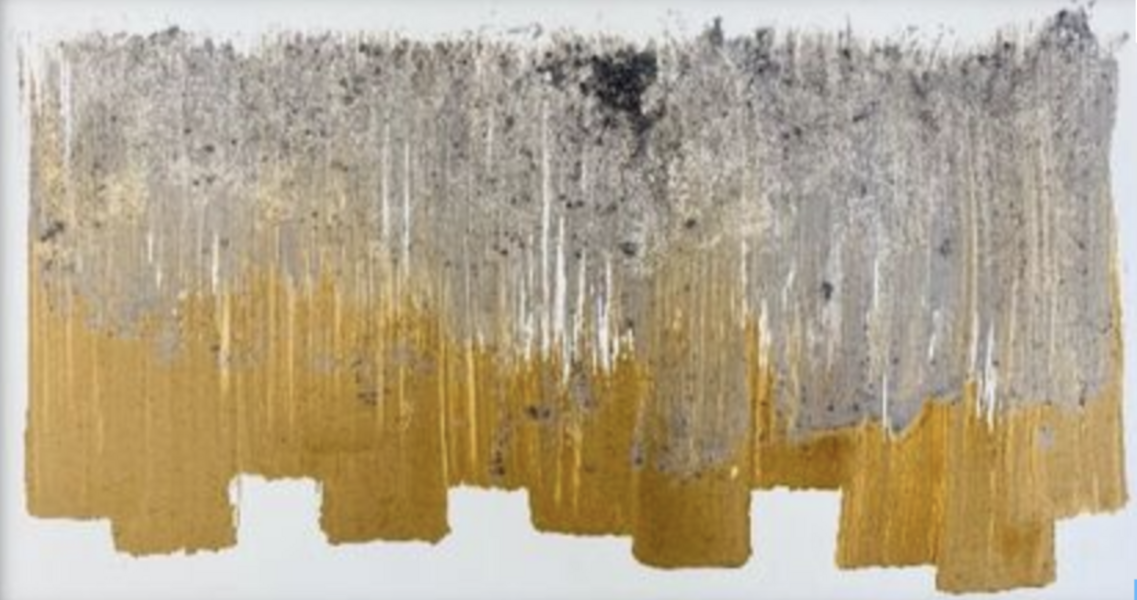 UntitledUntitled Extracted mine cores from Maine/Passamaquoddy land, Baltimore tap water, calcium hydroxide, soil 10"x18"
UntitledUntitled Extracted mine cores from Maine/Passamaquoddy land, Baltimore tap water, calcium hydroxide, soil 10"x18" -
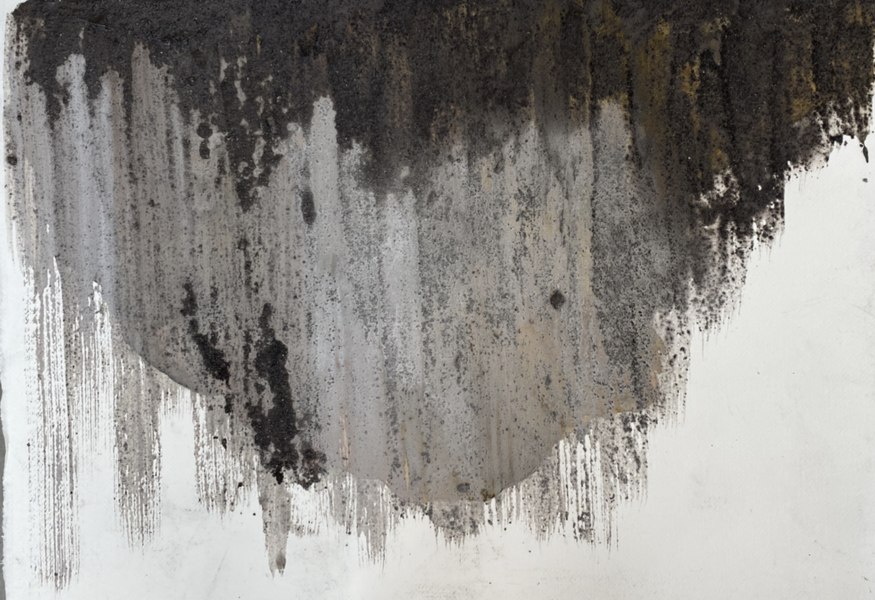 UntitledUntitled Extracted mine cores from Maine/Passamaquoddy land, Baltimore tap water, calcium hydroxide, soil 22"x26"
UntitledUntitled Extracted mine cores from Maine/Passamaquoddy land, Baltimore tap water, calcium hydroxide, soil 22"x26" -
ResonanceResonance: Ground mine cores from Passamaquoddy land, calcium hydroxide, DC tap water with sound collaboration with award winning folk musician Mali Obomsawin, Abenaki. 48"x120"








